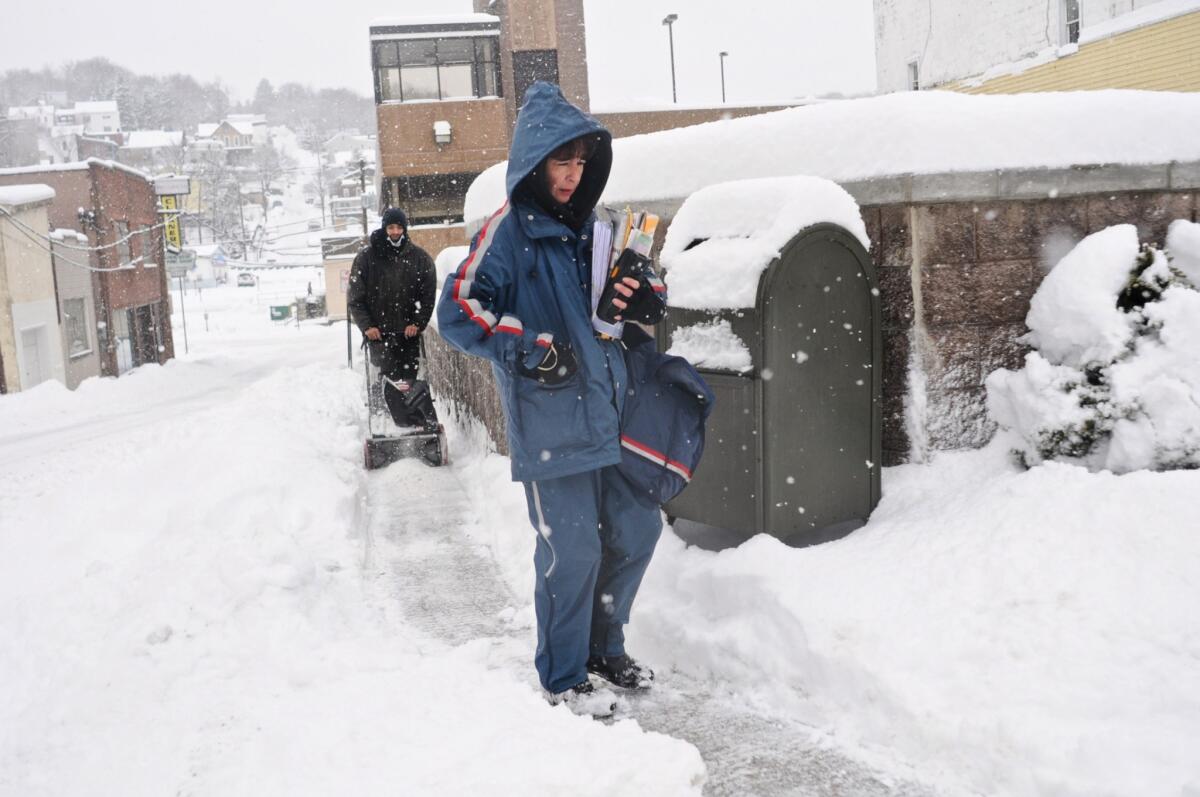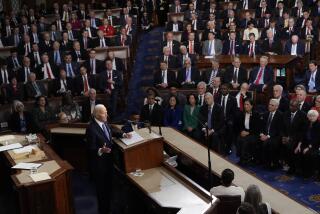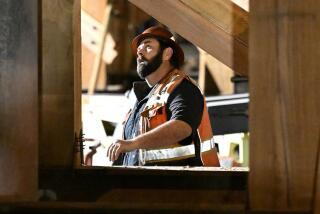February weather cost workers hours, but didn’t cost the U.S. jobs

WASHINGTON -- The weather was unusually bad in much of the country last month, so why was Friday’s government jobs report surprisingly good?
The economy added 175,000 net new jobs in February, up from a revised 129,000 the previous month. The figure exceeded analyst expectations of about 150,000 jobs, and some were predicting a much lower number because of the bitter cold and snow.
Labor Department data show the weather cost workers significant hours on the job.
PHOTOS: Federal Reserve chairs through the years
But partly because of the way the government crunches the numbers, the weather didn’t appear to have cost the economy jobs in any major way.
“Anecdotally, just walking around the streets in the Midwest and the Northeast, you would think that economic activity had slowed and that includes hiring by businesses, but we’re not really seeing it in the numbers,” said Chris Rupkey, chief financial economist at the Bank of Tokyo-Mitsubishi in New York.
“What happens is that the inclement weather in the winter has to be bad, we have to be snowed in for a week or more” in order to have an impact on jobs, he said.
The Labor Department said 601,000 non-agricultural workers were not on the job in mid-February because of the weather, up from 262,000 in the middle of the previous month.
It was the most people who missed work because of weather since November 2012, in the aftermath of Superstorm Sandy.
But most of those people probably were still counted as employed. The Bureau of Labor Statistics surveyed businesses during the work week of Feb. 9-15, when a major snowstorm hit much of the eastern U.S.
A person needs to be out of work with no pay for an entire pay period to be counted as unemployed. About 80% of workers are paid bi-weekly, according to the BLS.
“If you get paid every two weeks, all you have to do is work one hour in that pay period,” said Keith Hall, a research fellow at George Mason University’s Mercatus Center and a former BLS commissioner.
“It’s actually pretty hard to not be counted,” he said.
Jason Furman, chairman of the White House Council of Economic Advisers, said the unemployment rate was not affected because those weather-affected workers continued to be counted as employed.
But he said, “It is likely that the unusual increase in weather-related absences had some effect on payroll employment and average weekly hours.”
In addition, 6.9 million people who normally work full-time reported working only part-time because of the weather in February. That was the most since January 1996, when a historic blizzard hit the East Coast.
The average work week for all employees dropped by 0.1 hour to 34.2 hours in February. But for production and non-supervisory employees, the average work week dropped by 0.2 hour to 33.3 hours.
Gad Levanon, director of macroeconomic and labor market research for the Conference Board, said the 0.2 hour drop was a big one-month decline.
“I think most of the [weather] impact was on hours worked,” he said.
Economists said the most likely place for bad weather to hurt hiring was in the construction industry. And although construction job creation fell off in February, the industry still had a good month with 15,000 net new jobs added.
“We’re really surprised and reaching here to explain why weather hasn’t had quite the impact that we thought” on construction jobs, Rupkey said.
The strength of the construction industry in the face of the bad weather gives Rupkey optimism that job growth will pick up once spring arrives.
“The economy clearly is exhibiting early signs of cabin fever after a long winter and even greater job gains can be expected in the next few months,” Rupkey said. “Spring is in the air.”







